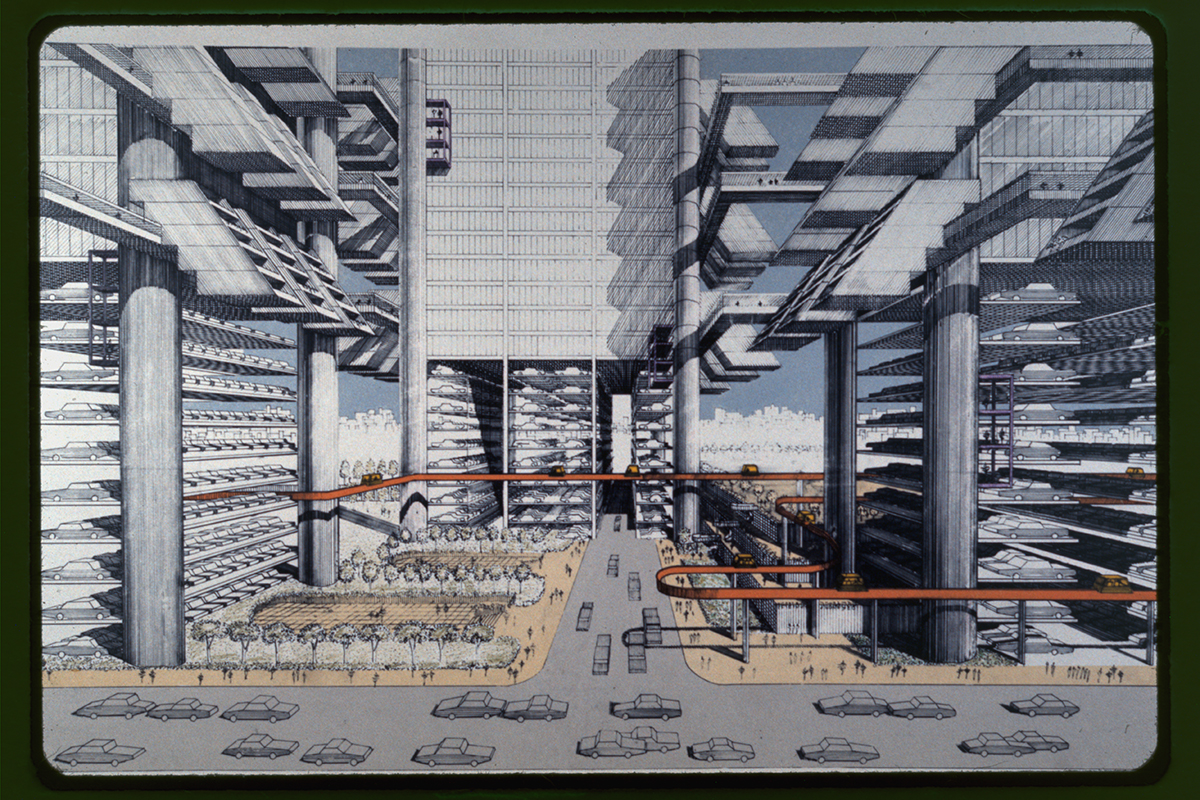
Michael Sorkin argues that the rise of autonomobiles and multimodal streets could yield greater political and public spaces.
“Autonomobility will have perhaps its greatest formal impact in altering the most critical matrix of public urbanity: the street. In New York, our streets are both troubled and changing. The widespread growth of cycling, an increase in tree cover, and various managerial efforts to ease traffic via modal mixing have resulted in an even more horizontally laminated streetscape that retains and reinforces modal isolation (sidewalk, bike lane, parking lane, bus lane, traffic lane, median, repeat . . .). We haven’t had the courage of more radical mixing tactics like the woonerf, or shared street, in which all modes coexist in one minimally regulated space. And we haven’t even begun to look at what the recapture of the street might look like if it were considered from scratch, with a radically reformed mix in mind—one in which individually owned cars headed for urban extinction.”
“Such revolutionary technology can have fundamental impacts on the form of both current and coming cities. To keep it friendly, however, will demand fighting the growing dominance of the “smart city” mind-set and its uncritical accumulations of “big data” to improve efficiency and control, without much deep thinking about noncorporate forms of desire. This must include the defense of many of our traditional gathering places—our squares, plazas, parks, and sidewalks. The reasons for mobility are not merely logistical. We move to live, to experience the other, to engage the pleasures of place, to collaborate, to enjoy happy accidents of encounter, and to enlarge the space of the political, which demands the verifying integrity of the face-to-face. New mobility systems, however, risk undermining urbanity in favor of a distributive entropy that arrives under the false flag of convenience. Mobility may become more flexible, but it might also become far less accessible (Uber Elevate won’t be cheap), a privilege rather than a right.” – Michael Sorkin
Read more ↓
The Autonomobile and the City, Architectural Record
Image courtesy of ↓
Paul Rudolph, The Library of Congress